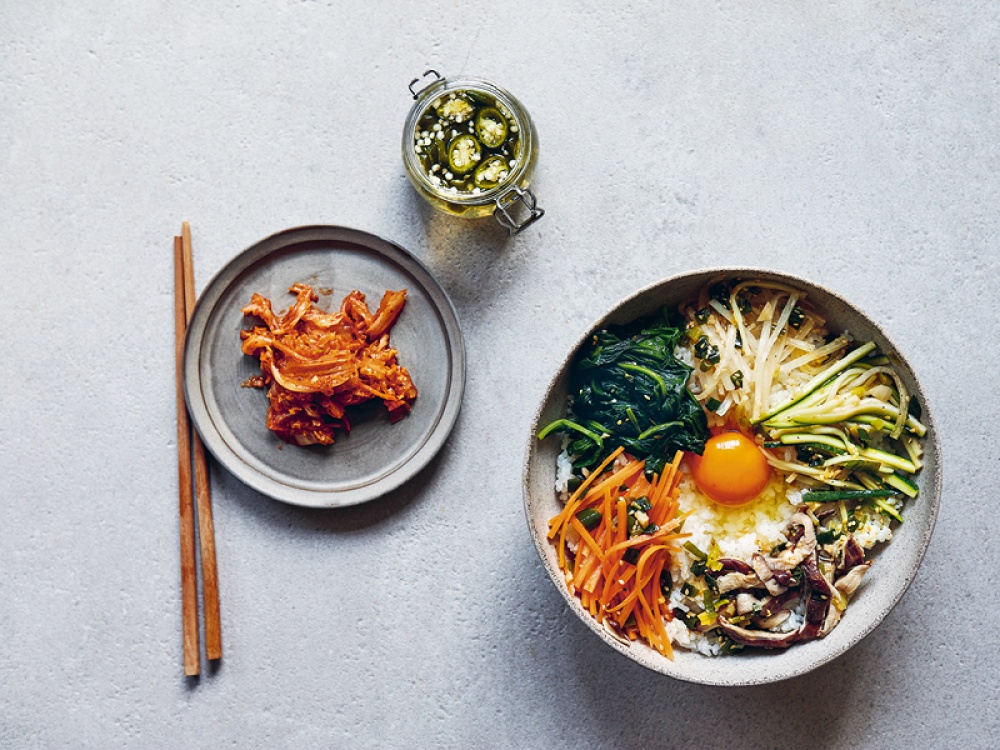Korean Bibimbab

This Korean dish has a very simple concept: rice, with assorted vegetables on top, artistically arranged
- 125g fresh shiitake mushrooms (or 55g dried shiitakes, soaked in hot water for 30 minutes), stalks removed and caps sliced
- 450g spinach, stalks removed
- 225g mooli, peeled and cut into matchsticks
- 225g carrots, peeled and cut into matchsticks
- 225g courgettes, cut into matchsticks
- 450g short-grain Japanese or Korean rice, freshly cooked
- 4–6 eggs
- Kimchi (or other pickled vegetables), pickled green chillies (optional)
- Soy sauce, to serve
- For the marinade
- 1 tbsp peanut oil
- 1 tbsp sesame oil
- 4 tbsp chopped spring onions
- 2 garlic cloves, finely chopped
- 1 tbsp sesame seeds, crushed in a mortar
- 2 tbsp light soy sauce
- ½ tsp black pepper or chilli powder
- 60ml vegetable stock or water
Separately blanch each of the vegetables in a pan of boiling water for one to two minutes, then drain. Squeeze out excess water from the spinach, then chop it roughly and place it on a platter, along with the other vegetables, keeping them all separate.
For the marinade, combine the two oils in a small saucepan over a medium heat. Add the spring onions and garlic and stir-fry for a minute or so, then add the sesame seeds, soy sauce and pepper or chilli powder and cook for one minute. Add the stock or water and simmer for two minutes, then taste and adjust the seasoning. Pour the marinade over the vegetables and leave to marinate for 10–15 minutes.
The easiest way to serve bibimbab really hot is to spoon the freshly cooked rice into fairly large, heated individual bowls. Arrange the vegetables on top in separate little piles to form a ring on top of the rice. Divide the marinade among the bowls. Break an egg into the centre of the ring, (or alternatively, break one in just before serving) then heat each bowl in the microwave (or steam it) for one to two minutes.
Add some kimchi to each bowl and allow your guest to push the egg into the hot rice to cook it further.







